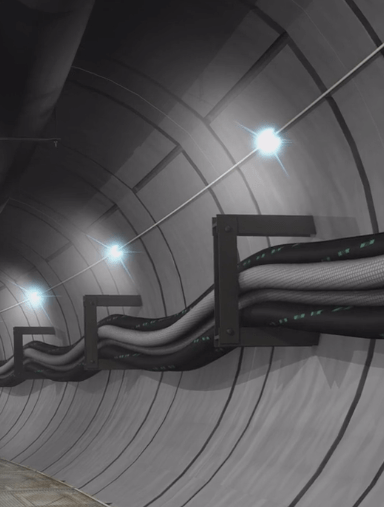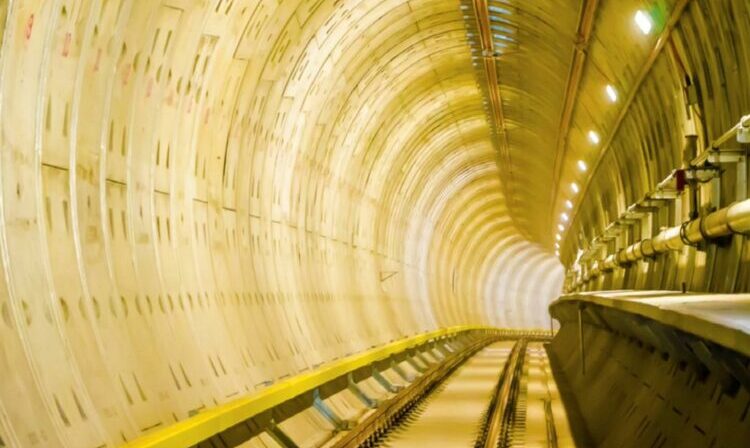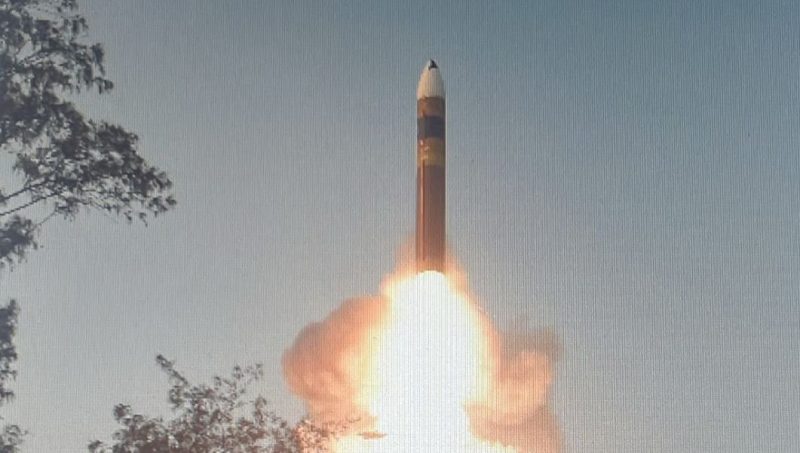Troy Helming, CEO of EarthGrid, adds another accolade to his green legacy in his latest endeavor, a cross-country, subterranean tunnel network built to centralize and distribute clean energy.
This article was written by Brooke Becher and published by California Business Journal.
Drowning tears over beers, clean-energy industrialist Troy Helming and crew bottled down the news of having to downsize their solar farm. Like many renewable energy projects, outdated infrastructures, such as an overwhelmed, antiquated grid in Helming’s case, are complicit in stunting progressive initiatives.
“It happens all the time,” the seasoned sustainability advocate says.
During the saddest of happy hours, one of his solar engineers — a former Navy SEAL — was sharing a war story when inspiration struck. He detailed how his team would cut into enemy ships equipped with 20,000 degree plasma torches that could “take your arm off” for submarine mutinies. A lightbulb sparked.
Helming, the founder of two US-based renewable energy companies, Tradewind Energy and Pristine Sun, was sure plasma-boring was yesterday’s headlines. To his surprise, the engineering firm he hired (months after that evening of alehouse blues) to conduct a feasibility study assured him otherwise — no, nobody’s doing it, and yes, it’ll work.
In fact, a proof-of-concept was already archived on record. In 1972, Los Alamos Scientific Laboratory developed nuclear subterrenes that could melt holes through granite at 30 inches an hour. Though the trial proved to be fruitful, expensive electricity costs, a cut in government funding and design snafus ultimately led to the program’s exit.
What began as a sailor’s ruse to impress a girl at a bar evolved into EarthGrid, a sustainability solution that aims to re-wire US infrastructure using cost-effective, patented arch-tunnel technology. The main character of the Bay Area startup’s operations is a plasma-boring robot, remotely controlled via gyroscopic navigation, that can drill one kilometer per day by way of vaporization and spallation, heating up to 27,000 degrees.

“Imagine a robot with ten lightsabers on the front, just kind of vaporizing through all of the rock and soil, and then a Mandalorian jetpack on the back blowing out all of the little, cornflake-sized bits of rock,” Helming describes in a video-documented tech demo.
EarthGrid’s rates — as low as $500 per meter or $500,000 per kilometer — range from a 90% to 98% average in savings compared to its competitors, at boring speeds 100 to 200 times faster than existing tech. Outpacing even the fastest machines specialized for hard rock excavation — double-shield tunnel boring machines, which max out at 100 meters per day — Helming’s plasma-powered creation can manage up to 1,000 meters per day.
“This can’t be right,” he remembered saying when he first ran the numbers. “It’s like 90% cheaper than every company I’ve hired over the years.”
As Helming tunneled further down the rabbit hole, the scratchpad of his cost-savings analysis read something like this:
Operational and labor costs get cut for several reasons — robotics means less workers. Plasma kills the need to change out drill bits and cutter heads multiple times daily; this technique also forgoes the use of toxic drilling chemicals, reducing environmental liabilities. Less materials means less waste costs. Whatever spoils pile up can be sold to road and concrete manufacturing companies on standby.
Meanwhile, a barren con list awaited.
“I’ve had a lot of ideas over the years and some of them haven’t worked out,” Helming says. “But this one seemed to be a homerun.”

Long term, the public benefit corporation wants to build a cross-country, subterranean tunnel network to once-and-for-all eradicate the use of fossil fuels, achieve 100% renewable energy and build an up-to-date infrastructure that can facilitate quantum high-speed internet, clean water, wastewater, transportation and even delivery services.
EarthGrid’s recourse to nonrenewable energy sources is to link up to substations exclusively powered by solar farms.
Spotlighting energy consumption, EarthGrid’s operations would require 6 to 15 megawatts to produce its two-and-a-half-meter-wide tunnels, fit for utilities, and 30 to 100 megawatts for its eight-meter-diameter tunnels, a use case for transportation. For the same efficiency delivered at a slower pace, Helming says that a lower wattage adjustment is possible, if need be.
“Even though [our method] uses a lot of power at any given moment in time, we’re so much faster that the consumption of electricity levels out,” Helming says. “Considering the energy another company would expend on one tunnel in smaller increments over a longer period of time, we would still actually consume less energy for that same tunnel.”
Frankly, the country needs people like Helming at the helm.
Latest scores mark the US 13th in infrastructure, consistently trailing behind other developed nations, and, in its latest report card analysis, the American Society of Civil Engineers recently pulled the country out of its D-grade average to a C-minus.
Well aware of the country’s decrepit conditions, President Joe Biden introduced a $2 trillion infrastructure and jobs package in August, listing 20,000 miles of rebuilt roads, overhauling the nation’s 10 most economically significant bridges and the elimination of lead pipes contaminating the water supply as its top objectives.
Given the historically high costs of tunnel boring, the bill may not carry as much mileage as Congress would hope.
“On a per mile basis, America’s transit rail projects are some of the most expensive in the world,” a Vox article reports, underscoring America’s unique economic model, mixing a part-private, part-public scheme to fund infrastructure. “In New York, the Second Avenue Subway cost $2.6 billion per mile, in San Francisco the Central Subway cost $920 million per mile, in Los Angeles the Purple Line cost $800 million per mile.”
Even in the most eco-conscious approaches, Elon Musk’s Boring Company prices construction costs between $10 million and $15 million per mile, CNBC reports.
Knowing his technology can best competitors across the board — in speed, sustainability and cost — Helming isn’t exactly waiting for anyone’s permission.
Having raised $16 million, cumulative of his own savings, friends-and-family funding and a $7 million pre-seed investment round, EarthGrid plans to break ground by December, starting in Texas and Nevada. Completion of the first project can be expected in the 10 to 15 days following paperwork formalities.
“We were actually talking with customers just this week to figure out who gets to go first,” Helming says. “Then we’ll just keep going; the machine will carry on from job to job.”
The robot’s patented, horse-shoe-shaped nose will be drilling a countrywide network buried three to five meters below the surface — deeper than the existing, “spaghetti” web located less than a meter below our feet — to be lined in conventional shotcrete.
Greenlit to go, EarthGrid has earned Certificate of Public Convenience and Necessity awards from 19 states, with 25 additional state submissions filed or pending.
“So what this means is that, as a utility, we can do the same thing that other telecommunications companies, like AT&T and Verizon, have done for 30 years,” he explains. “Once approved, we can put our fiber lines, and potentially other utilities in their tunnels, under any public roadway and no one can say ‘no.’”
 Partnerships are already in the works. Teamed with Austin-based Pipe Dream Labs, EarthGrid will be incorporating their 20-inch-wide, PVC tubes in its network, which shoot Amazon and Whole Foods packages across town at 60-miles-per-hour on the backs of bullet-shaped robot pods. This is, of course, just the beginning.
Partnerships are already in the works. Teamed with Austin-based Pipe Dream Labs, EarthGrid will be incorporating their 20-inch-wide, PVC tubes in its network, which shoot Amazon and Whole Foods packages across town at 60-miles-per-hour on the backs of bullet-shaped robot pods. This is, of course, just the beginning.
“If I had to guess, 25% to 60% of our infrastructure could be improved with tunnels, and that includes moving overhead transmission lines underground,” Helming says, noting the built-in resilience subterranean structures have in the face of natural disasters, such as hurricanes, high storms and fires.
Once EarthGrid services the needs of its solar and wind clients, streamlining their companies to market, Helming wants to prioritize underground projects that expand community access to fiber-optic broadband services and bury power lines to counteract year-round threats posed by Californian wildfires.
Truth be told, EarthGrid is only one piece of a larger puzzle for Helming. With his life’s mission rooted in green practices, Helming’s portfolio as a whole aligns under one objective: to save the US economy over $1 trillion per year via eliminating fossil fuels. (The details of which are outlined in The Freedom Plan authored in his 2004 paperback The Clean Power Revolution.)
“The general public doesn’t realize that, in terms of technology, we’re already there,” Helming says. “We don’t need new technologies to be invented to produce clean energy.”
And with wind and solar outpricing coal, natural gas and nuclear energy, there’s no longer an excuse for red-taped government arms and reluctant corporations to vice grip old habits.
According to Lazard’s 2021 Cost of Energy report, wind energy prices fell 72% alongside solar photovoltaics, at 90% in the past decade. For the first time on record, these two renewable energy sources generated 10% of the world’s energy in 2021, as reported in a BP Statistical Review.
In other words, it has officially become “cheaper to save the climate than to destroy it,” as Forbes puts it.
Now, Helming says, it’s just a matter of centralizing renewable energy plants to establish sustainable energy distribution as the new status quo.
“All we need is the transmission lines to do it,” he says. “Hence, the genesis of EarthGrid.”





